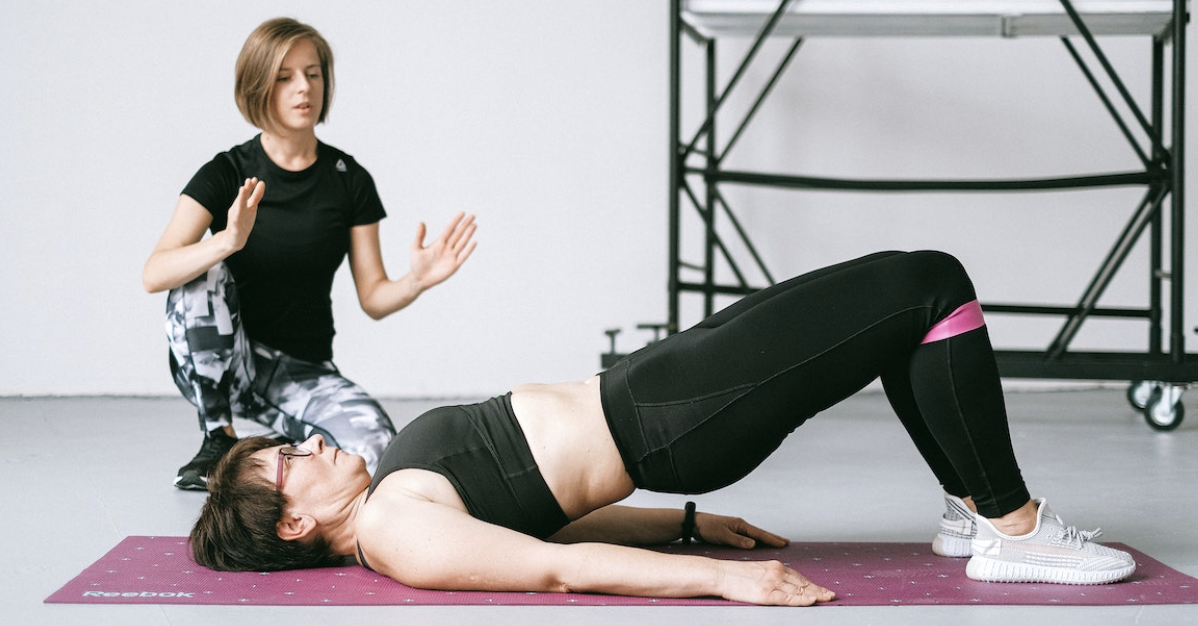 19Apr
19Apr
Take the path to a stronger core and improved fitness with at-home pelvic floor exercises! Strengthening the base of your core through dedicated exercises can set you up for better overall health and quality of life. So get ahead of the curve and follow these easy-to-do, time-effective pelvic floor strengthening tips. Ready to take the next step to health and wellness, have your best summer ever, and say goodbye to weak core woes? Keep reading on to learn more!
Pelvic floor exercises can be an effective way to alleviate discomfort in the pelvic region. These exercises aim to strengthen the muscles that support the bladder, uterus, and rectum, improving overall function and reducing pain.
Here are five pelvic floor exercises you can try today:
Before starting any new exercise regimen, consult with a healthcare professional, and always listen to your body to avoid overexertion.
By incorporating these practices into their daily routine, people experiencing pelvic pain may find relief without resorting to more drastic measures such as surgery or medication. Of course, it’s important to consult with a healthcare professional before beginning any new exercise routine. Still, by trying some simple at-home techniques like those mentioned above, you could see real improvements in both comfort levels & quality of life overall!
A strong core is essential for maintaining good posture, preventing injuries, and relieving discomfort in the pelvic region. At-home pelvic floor exercises can effectively strengthen your core muscles and ease pain or discomfort.
One of the primary benefits of at-home core exercises is that they are convenient, simple, and accessible. You don’t need any special equipment or a gym membership to get started. In addition, practicing these exercises regularly can improve your flexibility and balance while building strength in your abdominal muscles.
In addition to helping alleviate pain or discomfort related to issues like bladder control problems, low back pain, or chronic constipation – incorporating these home-based practices into one’s routine could offer several other benefits as well: such as reducing stress levels by promoting relaxation through focused breathing techniques; improving digestion by stimulating blood flow throughout various parts of the digestive tract; increasing overall energy levels with regular exercise routines that target key areas responsible for optimal physical health.
With so many potential benefits available from just a few minutes each day devoted but dedicated attention towards strengthening one’s own body – there’s no reason not to take advantage! Whether seeking relief from symptoms caused by specific medical conditions like endometriosis (which often causes severe menstrual cramps) or simply looking for ways to enhance overall wellness without leaving home- at-home pelvic floor exercises may be exactly what you need.
Staying motivated to do pelvic floor exercises can be challenging, but the benefits are worth it. Here are four tips to help you stay on track and reap the rewards quickly.
Firstly, set achievable goals. Start with small steps and gradually increase your workout as you progress. For example, aim for ten repetitions of each exercise in your first week and then add two or three more reps weekly.
Secondly, mix up your routine with different types of pelvic floor exercises. This will prevent boredom and keep you engaged during each session.
Thirdly, track your progress by recording how many reps you complete daily or weekly. Seeing improvement over time can be a huge motivation booster.
Finally, find a support system that will hold you accountable for doing these exercises regularly. This could be a friend working on their pelvic floor health or an online community dedicated to this topic.
By following these tips and making at-home pelvic floor exercises part of your daily routine, discomfort relief may come much faster than expected!
When it comes to strengthening the pelvic floor, proper breathing technique plays a crucial role in maximizing the effectiveness of your exercises. Using controlled, deep breaths during your pelvic floor strengthening routine can help engage and activate key muscles while reducing tension and discomfort.
The first step is to become mindful of your breathing pattern. Many people tend to hold or take shallow breaths when performing exercises targeting the pelvic floor muscles. This can actually create more tension in the area and make it harder for those muscles to engage properly.
Instead, try taking slow, deep inhales through your nose as you relax into position for each exercise. As you exhale through pursed lips or by making an “sss” sound with your mouth slightly open, gently contract and lift (or “squeeze”) your pelvic floor muscles from front to back.
It’s important not to overdo it with excessive force or strain – focus on finding a comfortable level of engagement that allows you to maintain steady breathing throughout each repetition. Over time and with consistent practice, this gentle yet intentional approach can help improve overall muscle tone while reducing discomfort associated with conditions like urinary incontinence or pelvic organ prolapse.
In addition, incorporating diaphragmatic breathing techniques such as belly-breathing, which focuses on expanding the abdominals, rather than chest-breathing, which relies heavily upon accessory respiratory neck movements, could prove beneficial.
Overall, remembering the correct ways to breathe throughout all exercising routines will provide added benefit towards achieving optimal results for one’s at-home journey toward pain relief.
Your pelvic floor muscles are essential for keeping your lower abdomen and pelvis area strong and healthy. Regular pelvic floor exercises can help reduce discomfort and make you feel stronger. Whether you’re just starting or a longtime exerciser, finding the appropriate activities to fit your needs is important. You can quickly have a stronger, healthier pelvic floor with the right moves. If you’re looking for other pelvic relief options, check out Pacific Roots CBD suppositories. With the right combination of at-home exercises and relief products, you’ll be on your way to a more comfortable life in no time. Shop Pacific Roots if you’re looking for other pelvic relief options.
Copyright © 2023 Pacific roots All Rights Reserved.